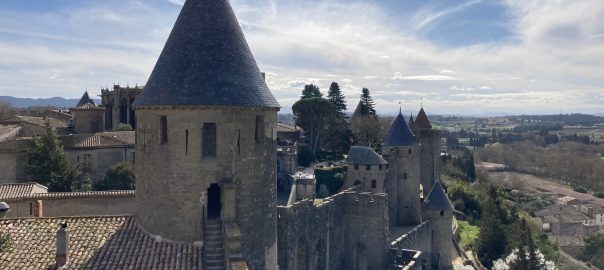2022 Givens Scholarship
Simon Terpstra ’23: Paris, France
Paris: the city of food, love, and style. A city so large that getting lost is as easy as taking one wrong turn. But it is this wrong turn that may lead you down a road traveled by kings, or to a quartier once occupied by revolutionists. Paris is the epicenter of a country so rich in history, and I was fortunate to spend an entire semester learning there. One of my more enjoyable courses that I took was about the history of Paris in art and architecture. This was a class dedicated to learning about what events and persons shaped the city into what it is today. We were hardly in the classroom. Our classes consisted of listening to our native Parisian professor speak as she guided us through the small streets and various museums. From the iconic Hausmann style architecture to artworks specifically completed for Napoleon, my professor connected history to the many art movements that occurred since the time of the Middle Ages.
I knew before arriving that I wanted to expand upon this learning outside the city limits. I could have easily spent every weekend wondering the streets of Paris, but there was so much more to see around the country. So, I did my research and found several locations where I could further explore the beauty of French architecture. When the time came, I booked a ticket, packed a bag, and set out into the unknown.

My travels to the Château de Balleroy were hectic. After staying up way to late the night before, I hopped on a 6am train to the northern city of Caen. However, sleep got the best of me, and I awoke one hour north of where I was supposed to catch a connection. Unhappy with myself, I rebooked a train back in the right direction and pushed my visit to a later time, finally making it several hours later. It was beautiful. Nestled just outside a small village in the French countryside, the Château de Balleroy stood tall as it overlooked rolling hills at its rear and mazed gardens at its front. The classical French mansion was constructed by famed architect François Mansart in 1636 for Jean II de Choisy. Son of a wine provider to Henri IV and advisor on the court of Louis XIII, he built the château to showcase their success. Its red brick facade and pleasing symmetry really highlight the classical elements used by Mansart. I really enjoyed the large windows decorating the front and the small cupola resting directly in the center. The interior is decorated just as elegantly. There are tall, intricately carved ceilings and walls. Paintings of all sorts fill the walls and hot-air balloon motifs are prevalent throughout the château. Interestingly, Malcolm Forbes of Forbes Magazine bought the place in 1970. It was he who had a large interest in balloons and even started the hot-air balloon festival which took place in front of the mansion. The Château de Balleroy has had many owners over the years, and each has added their own personal touches. Although it sits in the middle of nowhere and has housed residents from many different time periods, this hidden gem still keeps its class.

Traveling even further back in time, I made the trip to Carcassonne, a medieval fortress situated in southwestern France. Dating back to the Gallo-Roman period, this fortified city is believed to have been founded by the Romans around 100 BC. As I admired the views atop the ramparts, it was easy to see why they chose its location. You can see for miles from the hill it was built on. Carcassonne is guarded with two walls and 53 towers which were needed during the Crusades, along with attacks by Clovis and the Saracens. As I walked through the cobblestone streets it almost felt as if I was a peasant doing his weekly trading or a character in a Disney movie. Although somewhat touristy, kids ran around dressed up as knights and swung wooden swords, living their own modern-day fairytale. I imagined archers defending the city by shooting through arrow slits and catapults launching projectiles over the towering walls. Many famous cities around Europe, including Paris, began as fortified strongholds like Carcassonne. Visiting this city allowed me to capture an image of what Paris might have looked like over a thousand years ago.
I am so lucky to have been able to visit places such as the Château de Balleroy and Carcassonne. Not only were they amazing to admire and explore, visiting them added to my experience in the classroom. I was able to make meaningful connections from the art period to history and style. I am grateful to be part of such a supportive Wabash community, as these trips were possible through the Givens Scholarship. The support that students like me receive goes a long way in furthering art education and creating memories that last a lifetime. Thank you to the Givens family for taking part in my journey.